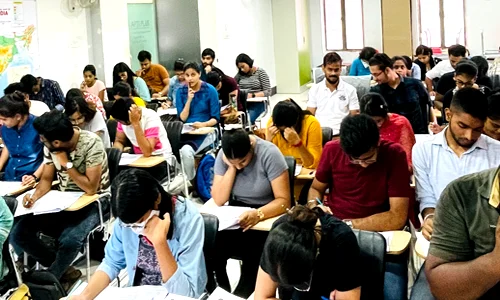



Ningaloo Reef in Western Australia has lost nearly 70 percent of its coral cover after an unprecedented marine heatwave. Mass death of key corals like Acropora has triggered a shift toward algae and sponges, exposing severe climate vulnerability and demanding urgent conservation and policy action.
Click to View MoreIn 2024, global tree cover loss surged due to wildfires, with tropical forests burning 370% more than in 2023, releasing 3.1 gigatonnes of CO₂. Climate change and droughts intensified fires across the US, Canada, EU, and Asia, threatening biodiversity and ecosystems. In India, forest fires are increasingly severe, affecting forest health, wildlife, and local communities. Government measures include fire management, afforestation, and community engagement, while long-term strategies emphasize climate adaptation, monitoring, and resilience building.
Click to View MoreGlobal efforts to protect forests are failing, with 8.1 million hectares lost in 2024, leaving the world 63% off track from its 2030 deforestation goal. Agriculture is the primary driver, compounded by financial systems favoring harmful industries. Without immediate action, climate and biodiversity goals are unattainable.
Click to View MoreEarth has crossed its first climate tipping point, causing irreversible mass dieback of warm-water coral reefs. Record ocean temperatures have triggered historic bleaching, threatening marine life and human livelihoods, signaling urgent global action to reduce emissions and prevent cascading ecological disasters.
Click to View MoreGlobal warming and deforestation are leading causes of species extinction in India, impacting biodiversity, livelihoods, and climate stability. Addressing them requires strong conservation policies, sustainable development, and community participation.
Click to View MoreLand conversion, driven by rising land prices, large-scale acquisitions, and environmental projects, threatens farmers’ access to land and global food security. This issue is worsened by population growth, industrial agriculture, and shifts in land use.
Click to View More
Vultures are crucial for public health, serving as a sanitation system and preventing disease spread. Their near-extinction in India, due to diclofenac, underscores the link between biodiversity loss and human pandemic risk. Government efforts, such as the National Action Plan for Vulture Conservation, aim to restore this species and protect the environment.
Click to View More
© 2025 iasgyan. All right reserved